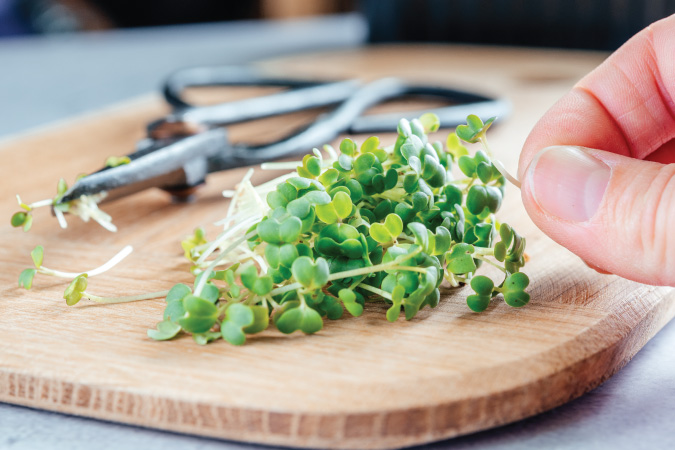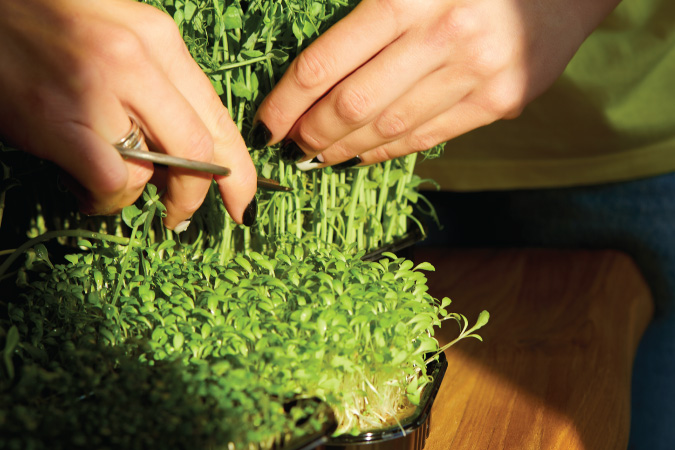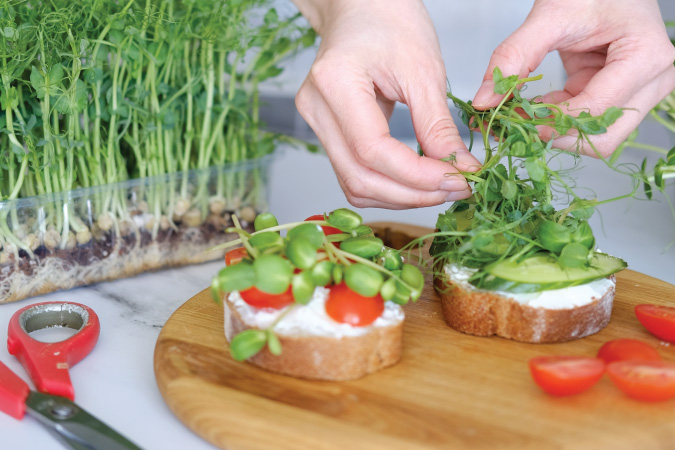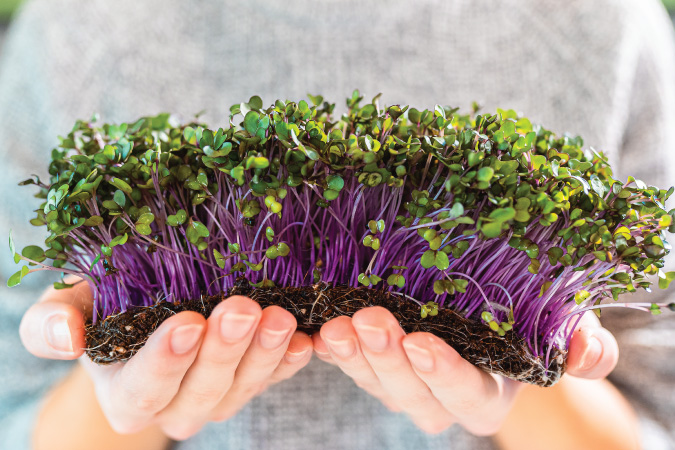A easy information on Harvesting and Storing Microgreens. Harvest day is an thrilling second—simply days after planting, you’ve gotten a tray bursting with mini-vegetables able to eat. Correct harvesting and dealing with will guarantee the perfect taste and shelf life.
When to Harvest Microgreens

Most microgreens are minimize once they’ve developed their cotyledons (seed leaves) and probably a tiny first real leaf, sometimes 1-3 inches tall. That is when they’re most tender and flavorful. Harvesting normally occurs effectively earlier than the crops begin getting tall, woody, or growing extra mature leaves.
A visible cue: the tray appears to be like like a thick garden, and possibly a couple of microgreens are beginning to lean over or get a second set of leaves – that’s an excellent time to chop. Please don’t look ahead to them to all fall over, otherwise you danger damping off or rot setting in on the base.
Harvest Microgreens

Use a clear pair of scissors or a pointy knife. Maintain a bunch of microgreens upright with one hand and snip simply above the soil line with the opposite. Keep away from chopping into the soil (you don’t need grit in your greens).
It’s usually best to work in sections, harvesting a portion of the tray at a time. If any seed hulls are nonetheless hooked up (conversant in sunflower or beet), you’ll be able to pop these off or blow calmly, and plenty of will fall away. Harvesting is greatest achieved when the greens are dry – so when you final watered from the highest, permit them to dry off earlier than chopping. This helps them retailer higher and prevents a slimy minimize edge.
Utilizing Microgreens Recent

Give the harvested microgreens a fast inspection and take away any massive seed husks or the uncommon bad-looking sprout. In lots of circumstances, when you develop in a clear medium, you don’t even want to clean microgreens – you’ll be able to eat them right away (very true for homegrown, the place you understand no pesticides or contaminants are current). They need to be very clear when you watered gently. Nevertheless, when you want to rinse, accomplish that very gently in a bowl of chilly water, then drain. Pat them dry with a paper towel or spin dry utilizing a salad spinner (only a few mild spins; don’t bruise them).
Microgreens shine when eaten uncooked: toss them on salads, pile them onto sandwiches and wraps, scatter them on soups or omelets after cooking, or mix them into smoothies and pesto. We’ve even dehydrated them and used them as a nutrient-packed garnish.
They pack quite a lot of flavors—radish microgreens, in a tiny leaf, gives you a wasabi-like punch, whereas pea shoots add a candy garden-pea style to something. Their dietary punch is highest when recent and uncooked.
Storing Your Harvest
In case you aren’t consuming all of them instantly, correct storage is crucial as a result of microgreens can spoil quicker than mature greens. First, make sure that any greens you propose to retailer are dry to the contact (extra moisture will promote rot). Line a plastic container or ziplock bag with a dry paper towel to soak up humidity. Place the microgreens loosely inside – don’t pack them or crush them. Seal it and hold it within the fridge.
The perfect fridge temp is round 35–40°F. Totally different microgreens have totally different shelf lives, however usually, use them inside 5 to 7 days for highest quality. Some research point out they will last as long as 10-14 days below refrigeration, usually requiring optimum circumstances and varieties. In apply, delicate micros like radish or mustard would possibly final ~1 week, whereas heartier pea shoots might last more. Test the saved greens each day and take away any decay bits (the remainder will last more if spoiled items are taken out). In case you discover the paper towel is damp, change it.
Another storage technique is gently wrapping the microgreens in a dry paper towel after which placing them in a bag—some growers discover this helps hold them crisp.
Meals Security Word

Microgreens grown at house have a low danger of contamination when you use clear practices (clear trays, recent seeds, potable water). They’re safer than sprouts as a result of they’re grown in mild and with airflow, not in a jar. Nonetheless, at all times use clear arms and instruments when dealing with them. Some individuals give a really mild rinse of a vinegar-water answer or use produce wash in the event that they’re storing some time, however it’s normally not mandatory for homegrown. In case you wash them, guarantee they’re absolutely dry earlier than storing them to keep away from microbial development.
Do not forget that, in contrast to a potted herb, microgreens is not going to develop after you chop them. In a couple of circumstances (like pea shoots or some herbs), when you go away a little bit of stem and the basis mat intact, you would possibly get a really sparse regrowth or a “second minimize,” however sometimes, the standard is far decrease. It’s greatest to compost the remnants and begin anew with recent seeds for a steady provide.
You possibly can lengthen a tray’s usefulness by harvesting in batches each few days. For instance, you might minimize one half of the tray someday and go away the remainder below lights to develop, possibly an additional day or two in the event that they had been barely behind. However usually, as soon as they’ve hit their prime, it’s time to reap utterly.
Get pleasure from this course of – there’s one thing extremely satisfying about snipping a tray of greens you grew in below two weeks and instantly sprinkling them onto your dinner.
From tray to desk in minutes is the final word farm-to-table expertise!
Learn Extra on this Sequence:
A Newbie Information to Rising Microgreens
The High 5 Best to Develop Microgreen Varieties for Inexperienced persons
Our Favourite Microgreens Provider:
(Visited 6 instances, 6 visits at the moment)














